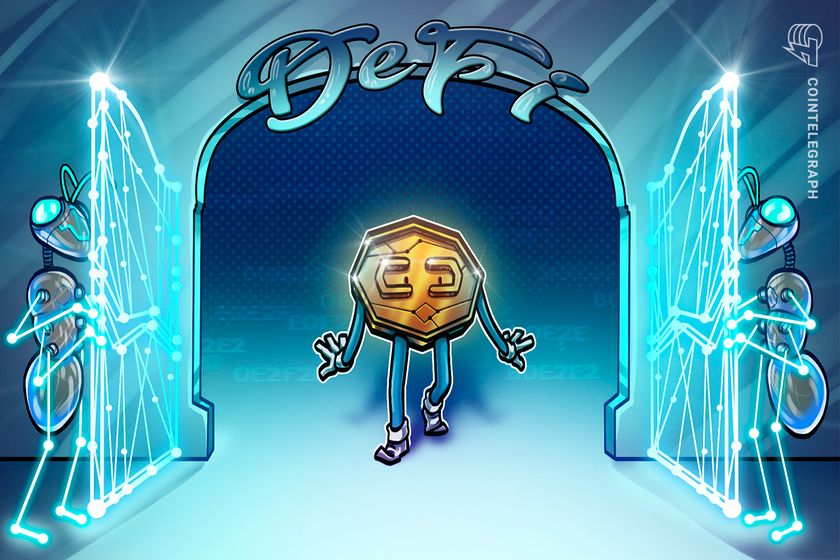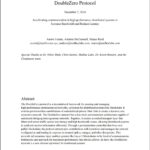In an insightful piece by Merlin Egalite, co-founder of Morpho Labs, the future of finance is being reimagined with the intriguing concept of the “DeFi Mullet.” This striking analogy captures the essence of combining the sleek, user-friendly front ends of fintech companies with the powerful, efficient back ends of decentralized finance (DeFi). While today’s fintechs excel in creating seamless user experiences, they often find themselves hampered by the limitations of traditional financial structures—slow, costly, and rigid.
In stark contrast, DeFi offers a revolutionary approach. Imagine international money transfers costing just a few cents and arriving in seconds, as opposed to the $30-$50 fee and lengthy wait typical of traditional banks. The potential of DeFi extends beyond just payments, encompassing a broad spectrum of financial services like trading and lending, all operating around the clock with lightning-fast transactions and deep liquidity.
“The mullet is inevitable,” Egalite asserts, highlighting that fintech companies are now incentivized to adopt decentralized infrastructures to enhance their product offerings and retain cost control.
As the DeFi landscape matures, it has become a viable partner for fintechs eager to innovate. The recent changes in the financial industry, such as major institutions like BlackRock venturing into tokenized assets and regulatory clarity emerging in the U.S., further point to a robust integration of DeFi into mainstream finance.
Egalite portrays this integration as an inevitable evolution, where fintechs can harness DeFi’s advantages while still adhering to necessary regulations. By doing so, they can continue to provide excellent user experiences while managing the complexities of compliance. This shift promises a future where financial products are not just available but ideally tailored to meet the demands of a digital-savvy customer base.
Looking ahead, we can expect a surge in offerings, including crypto-backed loans and instant payment solutions, all powered by sophisticated technology that ensures users enjoy a familiar interface. The essence of this transformation will largely remain invisible to end-users, creating a seamless blend of advanced technology and user-centric service.
While some voice concerns about the potential for decentralization to be compromised, Egalite argues that an effective regulatory framework can actually support sincere efforts toward decentralization. The focus should be on governing the applications users interact with, not the underlying protocols themselves, which need to remain open and neutral. This approach has historical precedents, as evidenced by successful protocols like HTTP and SMTP, showcasing the potential of decentralized systems in the financial domain.
Fintech and DeFi: The Inevitable Mullet Transformation
This article explores the merging of fintech and decentralized finance (DeFi), highlighting the advantages and implications for users and companies alike.
- Current Fintech Limitations
- Fintech companies rely on traditional financial infrastructure, which is slow, expensive, and inflexible.
- This limits their control over costs and product offerings, posing risks of inefficiency.
- Advantages of DeFi
- DeFi provides fast, cost-effective, and interoperable financial infrastructure, especially notable in stablecoin transactions.
- Offers 24/7 access to services like trading, lending, and borrowing, enhancing liquidity and price execution.
- Innovation through Integration
- Fintechs can leverage DeFi infrastructure for compliance while focusing on user experience, fostering innovation.
- This integration could lead to a positive feedback loop, enhancing on-chain liquidity.
- Mainstream Adoption of DeFi
- DeFi’s reliability for fintech integration is proving its market readiness, with examples of institutional involvement.
- The shift towards DeFi is gradual but tangible, as regulations become clearer.
- Future of Financial Products
- Expect more innovative products like crypto-backed loans and instant international payments from fintech leaders.
- Smart wallets will ensure a user-friendly experience, masking the complexity of DeFi.
- The Importance of Credibly Neutral Protocols
- Compliance and decentralization must coexist to enable effective regulation while upholding user trust.
- Protocols should remain open source and minimally governed to maintain neutrality.
- Consequences of Ignoring Opportunities
- Fintechs that neglect to adopt DeFi risk irrelevance, mirroring the decline of traditional banks facing modern fintech competition.
- The convergence of fintech and DeFi is not just a possibility; it is an inevitable shift in the financial landscape.
“The DeFi mullet is more than just a meme; it’s a structural shift.” – Merlin Egalite
Exploring the DeFi Revolution: Challenges and Opportunities in Fintech
The fintech landscape is undergoing a dramatic transformation, driven by the rise of decentralized finance (DeFi). While traditional financial institutions have long dominated the sector, they struggle to deliver speed and cost efficiency due to outdated infrastructure. In contrast, DeFi offers the promise of rapid, low-cost transactions that can reshape how we think about finance. This commentary by Merlin Egalite highlights the importance of combining fintech’s user-friendly interfaces with DeFi’s advanced backend capabilities, leading to what is being termed the “DeFi Mullet.” With this integration, both sectors can harness each other’s strengths, but the transition comes with its own set of challenges and implications for various stakeholders.
Competitive Advantages
First and foremost, fintechs seeking to adopt DeFi infrastructure can greatly enhance their offerings. Imagine instant international transfers that cost mere cents or crypto-backed loans that empower users with greater financial agility. This new model could revolutionize the industry, attracting younger, tech-savvy customers who prioritize speed and efficiency. Companies like BlackRock and Stripe are already making substantial investments in this space, signaling that institutional trust in DeFi is growing. Fintechs that move quickly to adopt these technologies can leverage existing network effects, giving them a significant competitive edge over those who lag.
Potential Disadvantages
Who Benefits and Who Might Be Left Behind

















